|
|
Comments: This is the second and final use of Obverse 1 and the only use of Reverse B in 1846. Reverse B is transitional. It was used again in 1847 to create the OC-1 die marriage |
Obverse 1 The following photo shows the Obverse 1 attribution grid. In early states the obverse die exhibits polish lines slanting up to the left from the denticles below the date, indicated by the lower arrows. The die was polished midway in the OC-1 mintage, removing these lines. A die line is visible in shield recess #4, also indicated by an arrow. 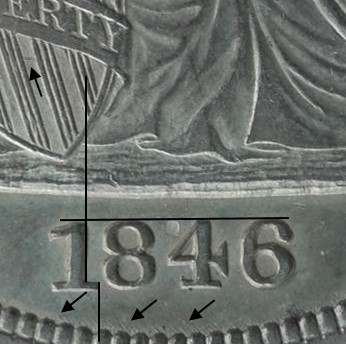 1846 Obverse 1 attribution grid The 1 is repunched at its top. The original punch shows above the final 1, seen in the next expanded photo. The repunching weakens in later die states. 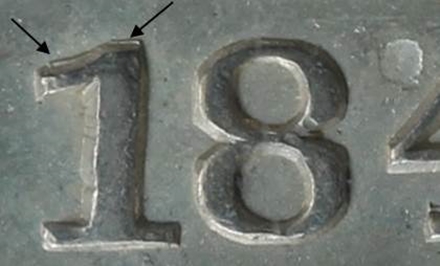 1846 Obverse 1 repunched 1 Obverse 1 exhibits two very prominent lumps on Miss Liberty’s left breast. These lumps are shown in the following photo. 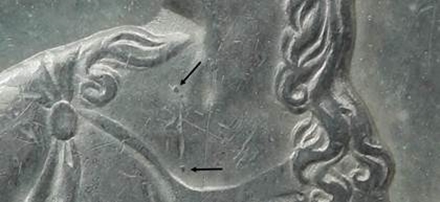 1846 Obverse 1 die lumps on chest The center lump, just above the V in the gown neckline, is visible on coins as low as VG, and is thus the best marker to quickly confirm Obverse 1.
|
Reverse B 1846 Reverse B features one minor die marker. Vertical shield line 1-1 extends through the horizontal shield lines to horizontal shield line 7. This may be visible only on mid- to high-grade examples, VF or better. Even then it may require relatively high magnification to see it. Photos often fail to show this line unless the lighting is just right. 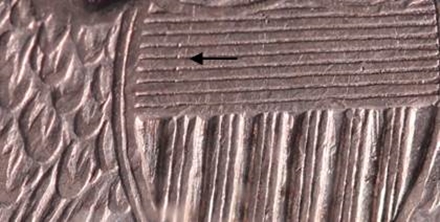 1846 Reverse B shield line 1-1 extension Early in its life Reverse B cracked at the base of ONE. At this point this crack, shown in the next photo, becomes the best marker to identify this die. 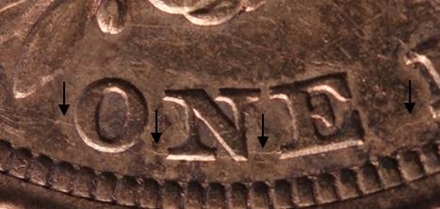 1846 Reverse B die crack
1846 Reverse B is transtional to 1847 (die marriage OC-1), first used in state c, later with more advanced die cracks. |
| Photo credits:
Obverse 1: 1846 NGC AU58, from the Osburn-Cushing reference collection. Reverse B: 1846 PCGS XF45, from the Osburn-Cushing reference collection. |
